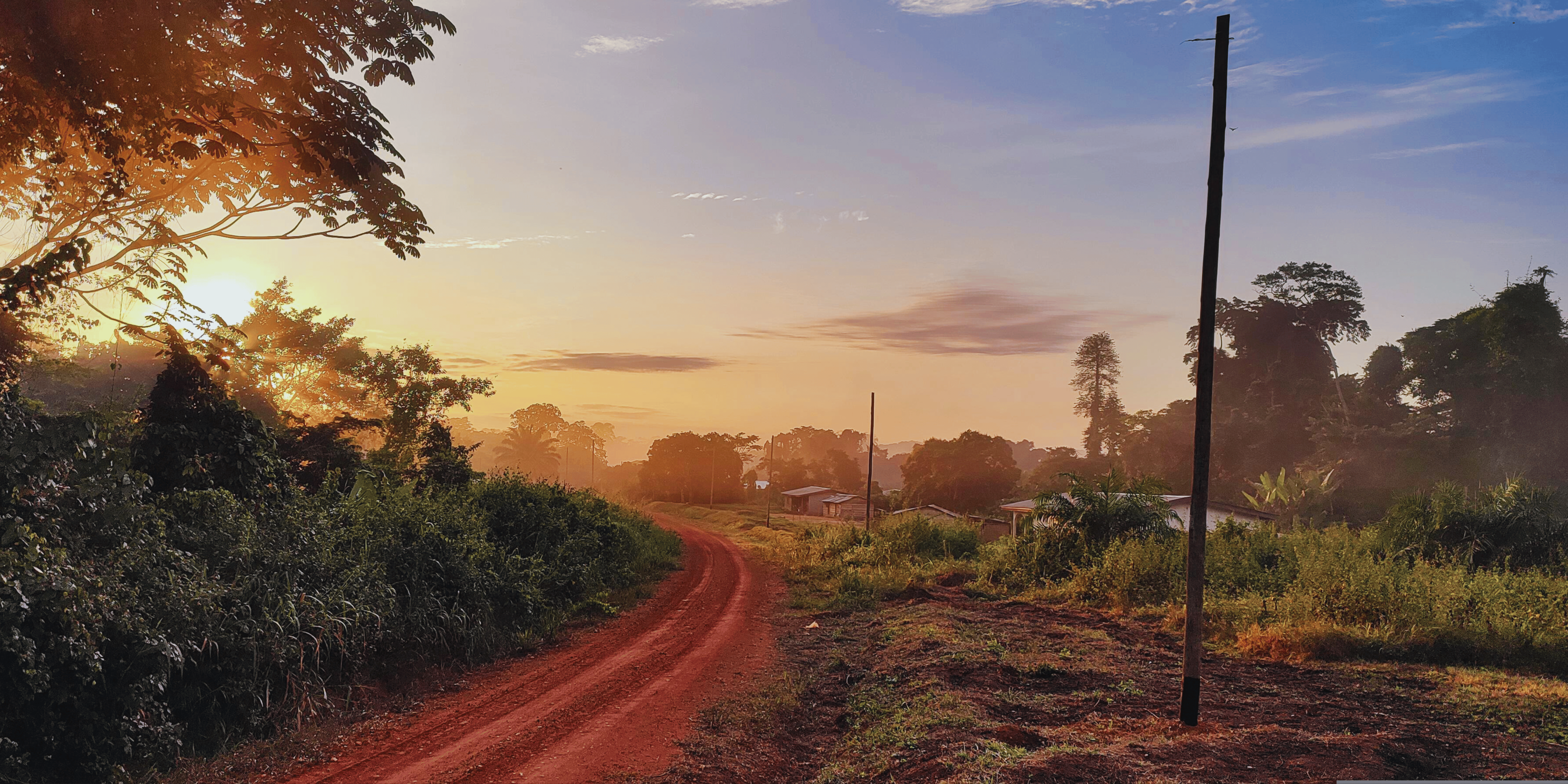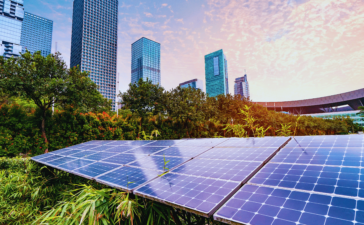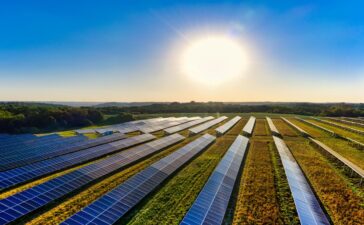Did it really snow on September 9, 2021 in Bana, a town nestled in the West Region of Cameroon?
Several news media outlets1 have joined the eyes of public opinion to look into the issue with great interest. According to the populations of the locality, there is no doubt and the question should not even arise, despite the fact that Bana is located in the heart of the tropical zone. Between noon and 2 p.m. that day, a solid white precipitation fell on a place called Bapouh, disfiguring the traditionally green landscape by imposing a white color. The residents were confronted with a sight that defied all expectations. This unprecedented event sent ripples of disbelief and wonder throughout the community, marking a day etched in the memory of all who witnessed it.
Located at a relatively high altitude – about 2000 meters above sea level – Bana is known for its pleasant climate and lush landscapes which earned it the nickname “Little Paris”. However, snow, traditionally associated with colder, more temperate regions, was a complete anomaly. The news spread like wildfire, drawing curious onlookers and sparking fervent discussions about the possible causes behind this extraordinary weather phenomenon.

Pictures and videos circulating on social media showed a thick layer of “snow” blanketing the roads and the verdant vegetation. People, for many experiencing snow for the first time, were excitedly playing snowball games and lying down to get a better feel for it, their laughter and shouts echoing through the crisp air.
24 hours after the Bana episode, Jean Ernest Massena Ngalle Bibehe, Minister of Transport, who is also the head of the body in charge of meteorological issues, published a press release explaining that it was not snow, and that similar phenomena occurred in 2017 and 2019 in Dschang (West Region) and Bamenda (North-West Region), respectively.
Beyond the exciting debate between the pro- and anti-snow debaters, one indisputable truth remains: Cameroon is suffering from the ravages of climate change, a scourge that is claiming more and more victims worldwide. Speaking on the Bana issue, the Deputy Minister of Justice, Jean de Dieu Momo, spoke of a curse that had befallen the locality, because the so-called snow will destroy agriculture, the main source of wealth for the local population.
If there is a curse, it surely does not date from the Bana event. For several years, climate change has seriously disrupted the consistency of rainy seasons, casting a shadow of concern over agricultural and food security.
Hailstones, not Snow
The unusual event in Bana has naturally prompted questions about the driving factors behind this climatic aberration. Local meteorologists and climate experts have weighed in, suggesting that a combination of factors may have contributed: unusually low temperatures, high altitude and atmospheric conditions.

Contacted by a contributor to France 242 – a French television channel – Sylvain Aoudou Doua, a geographer and lecturer who headed the Department of Meteorology and Climatology at the University of Maroua in the Far-North Region of Cameroon, explains that it is not snow, but a hailstorm: ” Bana is a city located in a plateau area at an altitude of 2,000 meters where temperatures are a little cold. There was a sudden drop in temperature due to very intense convection [an atmospheric phenomenon due to air instability that causes storms or cyclones, Editor’s note], which caused a significant drop in solid precipitation. The hailstones therefore piled up on the ground. The intensity of the precipitation, combined with the fact that the clouds were not very high and the ambient temperature was low, did not allow the mass of hailstones to melt very quickly, giving the impression that it was snow.”
The Effect of Climate Change on Rainy Seasons and the Agricultural Calendar
In most regions in Cameroon, there are traditionally two rainy seasons: the long season runs from March to June, and the short season, from September to November. Lienou et al. (2005)3 noted in a study that a substantial change in the rainfall schedule began in the 1970s, with a dry season that was increasingly growing. The principle being an increase in heat waves an a decrease in rainfall, coupled with a failure to adhere to a fixed schedule.
In addition, the National Observatory on Climate Change (2025)4 highlighted the sporadic rains frequently recorded in February – which normally corresponds to the dry season – for nearly two decades in the West, North-West, Center, South and Littoral regions. But there have been years when it rained during unpredictable periods such as in December or January.
The agricultural calendar is of course linked to that of the rain. Concerning the cultivation of corn for example, one of the most consumed foods in Cameroon, farmers generally sow between 15-30 March for the long rainy season and 15-30 August for the short rainy season. Nowadays, this calendar is completely disrupted. The rain comes when it wants and goes away in the same way.
Consequences on Harvests and Food Prices
A change in date has a negative impact on harvests, and this is what has been happening for at least the last 10 years. The rains come a little earlier or a little later, fall intermittently or sometimes too abundantly to the point of creating floods and destroying crops. Sometimes the rains stop a little earlier, preventing crops from reaching maturity.
Corn production has declined sharply, leading to a sharp increase in prices on the market. A 5-liter bucket of maize, once sold for less than 1,000 FCFA ($1.6) at the Mokolo Market in Yaounde, threatens to exceed 2,000 FCFA ($3.19) by 2025. Another example is charcoal-roasted maize, often sold on the sidewalk. Cobs used to cost between 25 FCFA ($0.04) for the smallest and 100 FCFA ($0.16) for the largest. Nowadays, large cobs cost between 250 FCFA ($0.4) and 300 FCFA ($0.48) in Yaounde. The smallest cost at least 50 FCFA ($0.08).
In a video published by the NGO Doctors Without Borders (2022)5, two Cameroonian farmers illustrate the reality experienced by everyone else. According to Adamou Moussa, “The harvests are no longer good. They are no longer of good quality to the point that people are struggling to get food even on the local market. As a farmer, I’m also suffering because I’m not getting the same yields as before.”
Abakar Mairou, another farmer, explains his difficulties: “In addition to my work as a mechanic for Doctors Without Borders, I work in agriculture and cattle breeding and do a little fishing. Years ago, the seasons were very good and the months and rainy seasons were fairly predictable. We could calculate when to plant crops and we would be able to harvest them. But in the last two or three years, the climate has changed a lot; the rains have started late and ended early. If the rains come late, it means the crops will be poor and we might miss the season. So that’s the biggest problem.”
Resilience Strategies & Public and Private Mitigation Measures
Trapped by the climate and unstable rainfall, farmers have no choice but to develop new strategies, at the risk of sinking into famine. When the rains come earlier, farmers rush to clear the land by sowing immediately, suspending all other activities and calling in reinforcement teams. When the rains come a little later, the seeds rot in the soil and need to be replaced, causing great losses.
In order to boost resilience strategies, the National Observatory on Climate Change has developed an application called “ONACC Alertes”, designed to keep the public informed of weather conditions in real time and to provide crucial weather alerts. In partnership with Cuso International, more than “sixty radio stations have been trained in the dissemination of this information and they are raising public awareness on climate change”.
In response to the challenges posed by climate change, the local team of the Partnership for Economic Policy (PEP) assessed the impact of introducing a policy of subsidizing agricultural fertilizer prices with the aim of increasing agricultural production, which in turn would “encourage formal sector enterprises to demand more labor, resulting in higher household incomes.” According to PEP, this strategy not only increases food security and production, but also improves overall welfare, particularly for rural households headed by women.
Recommendations
According to the IMF (2024) – International Monetary Fund – Cameroon is one of the 20 countries most exposed to the effects of climate change in the world, and if no adaptation measures are taken, the country will suffer many hard blows, in particular a loss of GDP between 4 and 10 percent by 2050. Some progress has been made in recent years, particularly in the creation of new policies through instruments such as the National Development Strategies (SND30) and the National Climate Change Adaptation Plan. The National Climate Change Observatory is also doing remarkable work on the ground by providing timely climate information. However, important challenges remain in building resilient agriculture and ensuring food security. More efforts are needed in crop diversification, water management, soil conservation, climate-smart practices such as cultivating climate-resilient crop varieties, and infrastructure development. Community-based solutions need to be taken into account by Cameroonian authorities in their decisions. Acting locally while thinking globally is a way to ensure effective development.
References
- Actu Cameroun: (2021): Retrieved from: https://actucameroun.com/2021/09/10/neige-sur-bana-ouest-une-malediction-sabat-sur-cette-commune-selon-jean-de-dieu-momo/;
- Cameroon Info (2021): Retrieved from: http://www.cameroon-info.net/article/cameroun-changement-climatique-la-neige-tombe-a-bana-ouest-et-suscite-la-curiosite-chez-404289.html;
- Cameroon Tribune (2021): Retrieved from: https://www.cameroon-tribune.cm/article.html/42312/fr.html/bana-pluie-de-grelons-sur-la-ville;
- International Association of Hydrological Sciences – IAHS (2005): Retrieved from: https://iahs.info/uploads/dms/13205.24%20158-168%20Foz%20S6-2-27%20Lienou.pdf
- International Monitory Fund – IMF (2024): Retrieved from: https://www.elibrary.imf.org/view/journals/002/2024/052/article-A003-en.xml
- Journal du Cameroun (2021): Retrieved from: https://fr.journalducameroun.com/cameroun-pour-jean-de-dieu-momo-la-tombee-de-la-neige-a-bana-est-une-malediction/;
- Le Bled Parle (2021): Retrieved from: https://www.lebledparle.com/selon-des-specialites-la-neige-n-est-pas-tombee-a-bana-dans-la-region-de-l-ouest/;
- Les Observateurs – France 24 (2021): Retrieved from: https://observers.france24.com/fr/afrique/20210915-cameroun-bana-ouest-changement-climatique-neige-grelons
- Médecins sans frontières – MSF (2022): Retrieved from: https://www.youtube.com/watch?v=k-m2MnHtu7I
- 237 Actu: Retrieved from: https://237actu.com/cameroun-le-ministre-des-transport-annonce-d-autres-chutes-de-neige-comme-a-bana/;
- Observatoire national sur les changements climatiques – ONACC (2025): Retrieved from: https://onacc.cm/pages/news_detail.php?news_id=68
Discover more from Future of Society
Subscribe to get the latest posts sent to your email.





